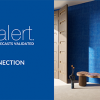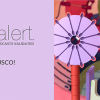Communication about color can be challenging, especially when the parties involved work in different parts of the color design process. Exact definition of what a color should look like and what its technical data should be is often regarded as a tricky thing. Talking about the look and feel of a color, for example, “a little bit darker” or “a little bit more green” makes it even more ambiguous. Furthermore, the use of one of the well-established international color systems may be regarded as being too inflexible to provide sufficient options for modern color design. However, there is widespread acceptance that the use of clearly defined color data and a binding standard drives efficiency, increases company performance, and can also boost creativity.
” …there is widespread acceptance that the use of clearly defined color data and a binding standard drives efficiency, increases company performance, and can also boost creativity.”
This is one of the reasons we are offering you the chance to take a closer look at one of the leading global color systems.
If you are participating this year in the Asia Pacific Conference, RAL Colours, established in 1927, will explain how they perceive colors and what can be done to clarify and improve communication about color.
Learn why color standardization can be helpful for you and how easy it can be to work with a color system which supports and strengthens your own creativity.
With a total number of 2,328 shades, RAL provides fan decks, single sheets on paper and plastic samples. The system also uses digital tools and provides inspiring trend information. Check out how easy it can be to follow a systematically arranged color system and how many applications in our daily life are following clear specifications.
For more information on the Asia Pacific Conference click here.










